Table of Contents
Enjoying the fruits of their labour
- If any class of economic agents of our country has been denied the constitutional right of freedom of trade, it is farmers.
- They don’t have the freedom of selling their produce even in their neighbourhood.
- Remunerative price is still a mirage for them.
- Their farm incomes are at the mercy of markets, middlemen and money lenders.
- For every rupee that a farmer makes, others in the supply chain get much more.
- This exploitation has its roots in the Bengal famine of 1943, World War II, and the droughts and food shortages of the 1960s.
- The Essential Commodities Act, 1955, and the Agricultural Produce Market Committee (APMC) Acts of the States are the principle sources of violation of the rights of farmers to sell their produce at a price of their choice.
- Renowned farm scientist M.S. Swaminathan has for long argued for the right of farmers to sell their produce as they deem fit.
- Efficient value chains: cold storage, stocking facilities, and transport of perishable commodities
- Study: restrictions on agricultural marketing amounted to ‘implicit taxation’ on farmers to the tune of ₹45 lakh crore from 2000-01 to 2016-17.
- This comes to ₹2.56 lakh crore per year. No other country does this.
Much-awaited freedom
- The most welcome feature of this package is the firm commitment to rewriting the Essential Commodities Act and the APMC laws.
- This long-awaited revision needs to be undertaken with care and responsibility so that no space or scope is left for farmers to be exploited yet again.
- Strong and effective network of Farm Producers’ Organisations should be created to enhance the bargaining power of farmers.
- An effective law on contract farming is also the need of the hour, to secure incomes of farmers besides enabling private investments.
- The huge support to animal husbandry and fisheries in the stimulus package underlines the need for diversifying the income sources of farmers.
The swarm
- Just last week, eastern India was battered by one of the most powerful cyclones in decades and now, even as hundreds of lives are lost every day to the coronavirus, another danger lurks on the nation’s west.
- Locust swarm threatens to amplify into an agrarian disaster.
- Locust Warning Organization (LWO) in Jodhpur
- Objectives: Monitoring and tackling periodic outbreaks of the marauding insects.
- There were 13 locust upsurges from 1964 to 1997, and after 2010 there was “no large scale breeding” reported.
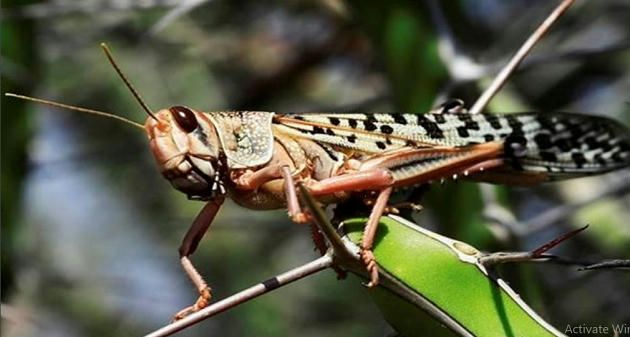
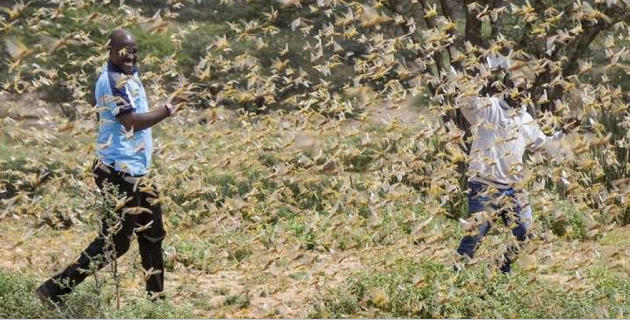
- Once a significant outbreak starts, it lasts for about two years, and then there is a quietus for about eight years.
- LWO officials say that the swarm building up is potentially the “worst in decades”.
- Humanity’s oldest blights — plague, pestilence — will never truly be eliminated.
- The breeding locusts which threaten farming are an indirect fallout of the warming Indian Ocean.
- By July it was evident that a positive Indian Ocean Dipole, or relatively higher temperature in the western Indian Ocean, was in the works. This led to record-breaking rainfall in India — then a cause for cheer — as well as in eastern Africa.
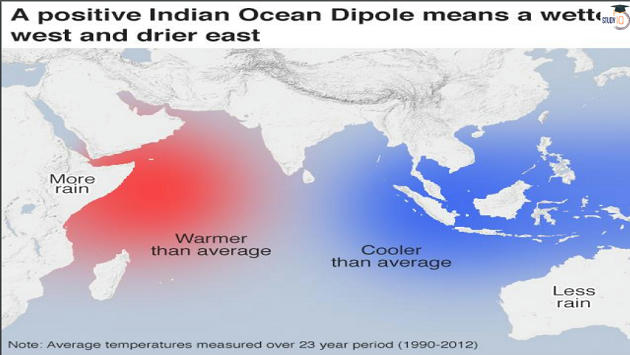
- But moist African deserts precipitated locust breeding and favourable rain-bearing winds aided their transport towards India.
- On the other hand, coronavirus quarantines meant that routine coordination activities involving India, Pakistan and Afghanistan regarding spraying pesticides were halted.
- A less highlighted aspect of global warming is that it may link disparate disasters — floods, pandemics and pestilence — amplifying the potency of each.
Calamities Galore (ToI)
- Unfortunately Covid is not the only crisis in town.
- Last week super cyclone Amphan left behind a trail of destruction in Bengal.
- This week locust swarms have been making waste across different states.
- North India (along with southeast Pakistan) acquired the unhappy distinction of being the hottest part of the planet.
- Governments now have to tackle multiple emergencies simultaneously that too may be a new normal.
- There is a direct link between environmental destruction and the increase in zoonotic outbreaks over the last 20 years.
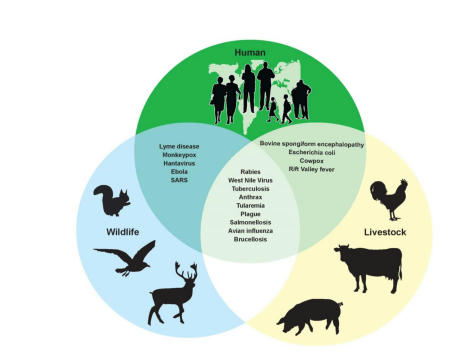
- On global warming, note that despite the cut in emissions caused by lockdowns 2020 is threatening to prove the hottest year since measurements began.
- All of this underlines how urgent it is that the world comes together to heed Nature’s message.
- Countries must increase their emission cut commitments.
- Bridge the chasm between developed and developing blocs over climate finance and tech transfers.
- Script a credible path to keeping global temperature increase limited to less than 2°C above pre-industrial levels by 2100.
- Locust affected farming communities must get crop insurance in timely and fair fashion.
- In addition many of them will now face water woes because of the heatwave.
- Local governments need to mobilise strongly and cooperatively to keep people hydrated, provide heat shelters, and medical help for heat exhaustion.
- Activities like construction which have gotten restarted will again need to hit pause in the scorched regions.
- The only way forward now is to build resilient infrastructure and communities.
Helping supply chains recover
- Much of the decline in output is due to supply chain disruptions generated by the lockdown.
- Putting money in the hands of people can increase the demand for goods but cannot increase the supply of goods and services.
- Upstream sectors like ‘mining’ produce metals that are in turn used to produce machines.
- These machines are used to sow seeds, harvest crops, and transport fuel.
- Finally, the harvested crops are used by downstream sectors to produce flour and bread.
- At each step, machines and labour combine to produce goods which are the inputs for sectors further downstream.
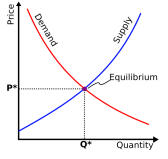
- Automotive spare parts may be non-essential in the short run, but become essential as food-carrying trucks begin to break down.
- The supply chain disruptions are going to be amplified by labour shortage as workers remain at home.
- Countries like India are likely to experience a greater reduction in output on this count than, say, Europe or the U.S.
- Poorer countries are less likely to be able to substitute locked down labour with capital because of the dearth of capital in these nations.
- As economies emerge out of the lockdown, entrepreneurs, workers, and consumers must adjust to the new reality.
- The world supply chain must adapt.
- Firms may, for instance, choose to source inputs from suppliers in their geographical proximity to minimise the risk of future disruptions.
- Bureaucrats have little incentive or information to bring about the granular supply chain adjustments necessary to revive growth.
- So what can the government do? The experience of West Germany after World War II has a useful lesson.
- Beginning mid-1944, Allied bombing disrupted the German supply chain by targeting bottleneck sectors like electric power generation.
- This destruction of the supply chain devastated the German economy.
- Per person food production fell to about half of its pre-war level.
- Two years later, this changed after Chancellor Ludwig Erhard lifted price controls and cut taxes.
- West German entrepreneurs re-established a thriving supply chain through which goods went from upstream sectors to final consumers.
- By 1950, per capita income in West Germany had reached its pre-war level.
NEWS
- Now, Trump offers to mediate between India and China
- U.S. President Donald Trump said on Wednesday that he had offered to help New Delhi and Beijing resolve their tensions at the Line of Actual Control (LAC).
- The offer came as a surprise on a day the Chinese Ministry of Foreign Affairs appeared to soften its line on the standoff, suggesting the situation was “stable and controllable” now.
- Indian and Chinese troops have faced off at at least four points along the LAC, including Pangong Tso (lake), Demchok and Galwan Valley in Ladakh and Naku La in Sikkim.
- Mr. Trump did not elaborate on his offer, which came as a surprise for several reasons.
- His comments also appear to be at variance with the stand taken by senior U.S. State Department official Alice Wells, who squarely blamed China for the border tensions and called it a “threat” to all its neighbours.
- Moreover, Mr. Trump’s offer comes at a time when the U.S. and China themselves have tensions between them on several fronts.
- ‘Differences mustn’t shade ties’
- India and China have kept up “close communication and cooperation” since the COVID-19 outbreak, said China’s Ambassador to India Sun Weidong, adding that he was “impressed” by India’s handling of the pandemic thus far.
- While he made no direct reference to the ongoing stand-off between the two Armies at the Line of Actual Control in Ladakh and Sikkim, Mr. Sun said that India and China should “never let the differences shadow the overall situation of bilateral cooperation”, referring to the two countries as the “Dragon and Elephant dancing together”.
- “Our two leaders President Xi Jinping and Prime Minster Narendra Modi have exchanged letters, and our foreign ministers made phone calls twice to strengthen our anti-epidemic cooperation,” said Mr. Sun, speaking at an Internet seminar or webinar for “Indian Youth” on Wednesday.
- Referring to the resolution by more than 100 countries at the World Health Assembly this month that called for a full enquiry into the origins of the novel coronavirus, Mr. Sun said all countries should be “vigilant” about what he called “conspiracy theories” that China had concealed the pandemic or that the virus had originated from the Wuhan Institute of Virology.
- Amid impasse, commanders’ meet begins
- The continuing tensions along the Line of Actual Control (LAC) are likely to top the agenda as the biannual Army Commanders Conference (ACC) began on Wednesday, with discussions led by the Army chief and the seven commanders, with a specific session devoted to each command over three days.
- The sessions by the Northern and Eastern Commands would be of particular interest as they cover the border with China. The ACC was originally scheduled for April, but was postponed owing to the COVID-19 pandemic, and is now scheduled to be held in two phases.
-
- Several military officers say the issue has to be resolved at the diplomatic and political level as the two Armies are entrenched on the ground and the talks between the local commanders haven’t made any headway.
- ‘India should pull out forces from Kalapani’
- India should withdraw security forces from the Kalapani region and restore status quo, Nepalese Foreign Minister Pradeep Kumar Gyawali said on Wednesday.
- He said a solution to the border dispute should be found urgently, even as Indian sources confirmed that they were closely monitoring the debates in Nepal’s Parliament to provide a constitutional guarantee to the new map that shows the disputed region as part of Nepal’s sovereign territory.
- Mr. Gyawali said Nepal appreciated the ties it shares with India but was disappointed with the November 2019 political map of India that brought the issue back to the table. “The map is a breach of the 1997 understanding that both sides had reached during the Kathmandu visit of Prime Minister I.K. Gujral,” he said.
- India has taken note of the parliamentary debates, with informed sources saying the South Block is “carefully following” the developments in Nepal. South Block’s concerns about the Kalapani region is of particular significance as the Lipulekh pass in the region connects India with Tibet.
- Govt. removes ₹4,500 ceiling on COVID-19 test
- The Indian Council of Medical Research (ICMR) has written to all the States and the Union Territories, suggesting that the upper ceiling of ₹4,500 for the reverse transcription-polymerase chain reaction (RT-PCR) test for COVID-19 be removed so that they can negotiate with the approved laboratories and introduce cheaper tests.
- The ICMR said the option was being given now as the “testing supplies situation has stabilised with greater local procurement”.
- The direction came on Wednesday when India reported 6,387 new cases and 170 deaths.
- The total number of cases stands at 1,51,767, including 83,004 active cases, 64,425 discharged and 4,337 deaths, according to the Health Ministry.
- Governor modifies law on forest rights
- Maharashtra Governor Bhagat Singh Koshyari has modified the Scheduled Tribes and Other Traditional Forest Dwellers (Recognition of Forest Rights) Act, 2006, allowing rightful claimants of forest rights to appeal against decisions of the district level committee (DLC).
- Activists, however, are concerned that this will lead to further delays in implementation of forest laws.
- A notification issued on May 18, 2020, said the Governor has modified Section 6 of the Act, in its application to Scheduled Area of the State of Maharashtra, in exercise of the powers conferred on him by Schedule V of the Constitution.
- The Governor’s office said the notification is important to provide justice to tribals whose ‘individual or community forest right’ has been rejected by the DLC, constituted under the Forest Rights Act (FRA).
- Despite lockdown, wheat procurement on target
- On the back of a record wheat harvest of more than 1,071 lakh tonnes, procurement of the grain — currently at 342.6 lakh tonnes — has also crossed last year’s levels despite the lockdown, and is well on the way to reaching this year’s target of 407 lakh tonnes.
- However, the progress on procurement is uneven, with States such as Punjab and Haryana racing towards their targets despite a late start, while Uttar Pradesh lags behind, having reached less than 40% of its target.
- Madhya Pradesh has already crossed its target.
Download Free PDF – Daily Hindu Editorial Analysis






















 WhatsApp
WhatsApp